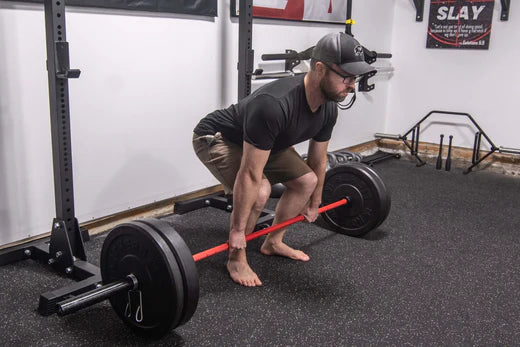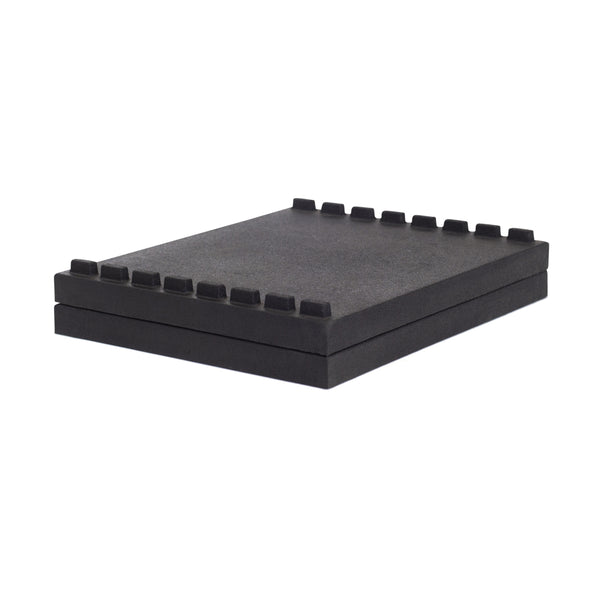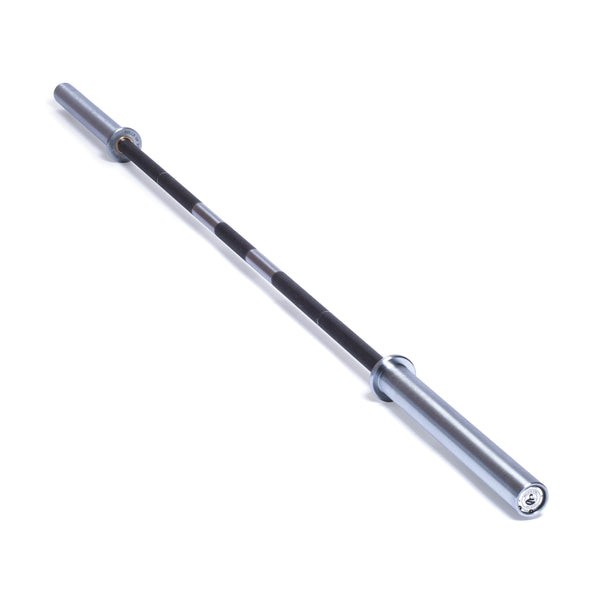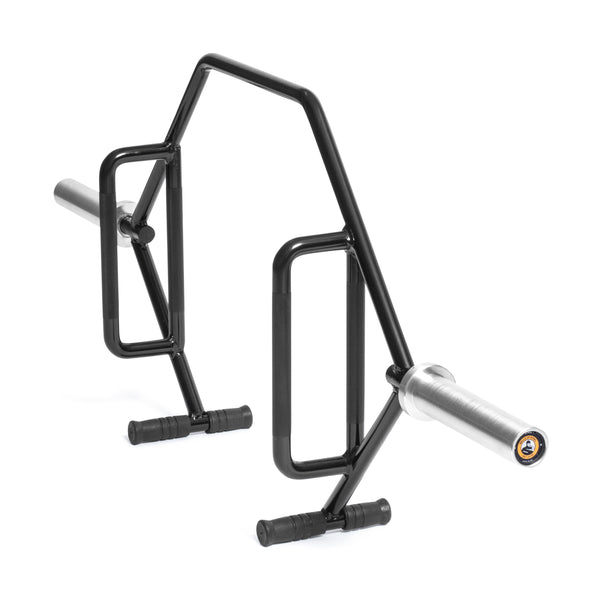In the world of strength training, is there anything better than the feeling of pulling heavy weight off the floor?
I'll answer the question for you: no, there isn't. 💪
But the feeling of pulling heavy iron off the floor can easily be offset by a corresponding pain in your lower back either during or after your workout.
Back pain may be common, but that doesn't mean it's normal. Hoping it will go away on its own or choosing to push through pain isn't the path to walk if you want a long and rewarding lifting career.
I'm no stranger to lower back pain. Perhaps it's why I'm so passionate about educating and helping fellow lifters understand, navigate, and overcome this all-too-common issue.
This article will provide insights into what causes back pain when deadlifting and strategies for tackling this all-too-common beast. The result will be heavier lifting, less back pain, and more fulfilling training sessions.
Cause of Lower Back Pain When Deadlifting
When discussing lower back pain, there’s a lot of information to unpack: the underlying cause of the pain itself, the tissues and structures involved, what the pain signifies, and much more.
This brief overview will point you in the right direction for taking subsequent actions, but, as always, make sure you work with a qualified healthcare professional to ensure your back rehab is individualized to suit your particular needs.
If you experience back pain during or after your deadlifts, there are a few things you should know.
The most commonly involved structures and tissues that cause pain when deadlifting are:
- Intervertebral discs
- Nerve roots
- Facet joints
- Muscles & tendons
- Poor deadlift technique
- Excessive training volume
Let's break it all down and discuss what this all means.
The Anatomy of Back Pain
It's not your job to know detailed human anatomy and physiology (it's my job). However, a basic appreciation for the anatomical contents of your back will go a long way in making recovery and injury prevention much more intuitive and successful.
The backbone (haha) of my job as a physical therapist and strength and conditioning specialist is to educate those who are looking to learn about how to make their bodies physically stronger and more resistant to injury. So, read through the basics below.
Intervertebral Discs
The intervertebral discs of the spine (often just called the discs) are pieces of fibrocartilage (like little hockey pucks, if you will) that sit between each vertebra within the spine. Their job is to help the spine bear load, adding to its robustness and overall ability to produce pain-free movement.
The discs in the lumbar spine (the bottom region of the spine) are prone to deforming in a manner that can compromise their integrity, leading to pain and discomfort. These types of deformities exist in varying degrees of severity, ranging from mild disc bulges to severe herniations, extrusions, and more.
The nerves within your legs supply sensation and produce movement by making your muscles contract. Every nerve within your leg comes from your spinal cord. The nerve's initial branching off of the spinal cord itself is known as the nerve root. It can often become irritated, leading to painful sensations in the back or even down the leg (a condition known as radiculopathy and often referred to as sciatica).
Nerve irritation causes vary, but it's often due to physical pressure being placed on the nerve root, often from a bulged disc or narrowing of the space where the nerve root passes out through the vertebra.
Facet Joints
Facet joints are the fingernail-sized joints within the spine that link one vertebra bone to the next. These joints exist throughout the entire spine and allow the spine to twist, bend, extend, and rotate.
Sometimes these joints become sore and painful. This may be due to the affected joint(s) becoming stiff or even stuck, which can lead to pain or discomfort when trying to move in a direction that the joint can't adequately produce.
These joints can also become sore and painful due to degeneration (arthritic joints), which tends to be more common in lifters aged 40 and up.
This type of pain tends to be quite sharp and focal in nature — patients will often point to the spot on their lower back with their fingertip and say, "The pain is right here."
Muscles in the Lower Back
Muscles and their respective tendons can also cause low back pain and discomfort.
There are numerous muscles that comprise the lower back region, all of which contribute to executing the deadlift. While the specifics of these muscles are far outside the scope of the article, the ones to be aware of are:
- The erector spinae (a group of three muscles on each side of the lower back)
- The psoas muscle (a hip flexor muscle)
These muscles are often quite tense on many lifters whom I treat. The psoas, in particular, is a sneaky muscle that often isn't thought of when dealing with lower back pain. However, it attaches to the bottom five vertebra in the spine and can easily cause lower back discomfort if it's tight.
Getting some soft tissue treatment from a qualified professional can go a long way if your hip flexors are tight or if your lower back muscles are tense and overworked.
Solutions for Back Pain When Deadlifting
Now that you have a basic rundown of the most common sources of low back pain when deadlifting, it's time to talk solutions.
Make sure you read through each solution below so that you stand the best chance possible for getting back to pulling heavy weight off the floor, sans pain.
Solution 1: Ensure Flawless Technique

Prioritizing form when deadlifting is the foundation for avoiding and eliminating back pain. The best therapeutic treatment and exercise program in the world won’t give you lasting pain relief if you keep performing your deadlifts with less-than-ideal form.
Everything starts with flawless technique. This means setting your ego aside and not letting the weight dictate the fate of your back. Despite the deadlift being simple in concept (lift the weight off the floor, set it back down, repeat), it's a very technical movement to produce.
The heavier the weight relative to your maximal abilities, the more precise your technique must be. Very light loads allow for a "buffer" when it comes to less precise form — it's easier to get away with movement errors and not experience consequences.
However, it's not the same story with heavier deadlifts. Every aspect of your deadlift form and execution must be on point. Even the smallest movement errors under heavy load can lead to notable issues arising in the lower back.
While this isn't an article detailing all of the technical components that go into optimizing the deadlift for safety and performance, here's what you must absolutely be aware of:
Deadlifts should always be performed with a flat lower back
Never let it round at any point in the lift, as this creates an inefficient lift and can predispose the discs, joints, and muscles to injury.
This topic becomes quite nuanced when dealing with maximal loads in highly competitive lifters. However, for lifters otherwise dealing with low back pain, focusing on maintaining a neutral spine throughout every portion of the deadlift should be a top priority.
Ensure that your hips and shoulders rise and and lower together
Many lifters make the mistake of letting their hips rise at a faster rate than their shoulders, which causes the chest to point toward the floor, forcing the lower back muscles to work excessively hard during the lift.
Control your lift at all times
Don't try to yank the weight off the floor. You want to achieve whole-body tension (i.e., taking the slack out of your arms, legs, etc.) before forcefully pulling the weight upward.
Ripping the weight off the floor without achieving this muscular tension can be excessively strenuous for the muscles of the lower back.
Solution 2: Perform Your Deadlifts From Blocks
Not every lifter has the hip mobility required to perform deadlifts from the floor. Some lifters will find that, despite their best efforts, they can't quite maintain a neutral or flat lower spine position when setting up for the deadlift.
It's likely in your best interest to modify your range of motion when deadlifting if your back always wants to go into a rounded position — especially if you're lifting heavy.
An easy solution here for those with limited hip mobility when setting up in the starting position is to pull the bar from a slightly higher surface than the floor level. This is best done by either placing lifting blocks underneath the weight plates or by resting the bar on power rack pins and pulling from there.
You only need to use a high enough block height or rack height to keep your spine neutral at all times. For most lifters, this is only a few inches — but it saves your lower back a world of repeated stress and strain that can lead to pain or discomfort.
Solution 3: Switch to Sumo Deadlifts

The sumo deadlift requires much less effort from the lower back muscles than the conventional deadlift. As such, it makes for an outstanding variation for those who are having lower back issues when performing conventional deadlifts.
If modifying your deadlifting range of motion isn't optimal, switching from the conventional deadlift over to the sumo deadlift is another solid deadlift modification to implement.
I had to implement this strategy for myself years ago when dealing with horrendous amounts of lower back pain. It allowed me to continue deadlifting throughout my rehabilitation process without incurring nasty pain after each deadlifting session.
Compared to its conventional counterpart, the sumo deadlift minimizes stress on the lower back by forcing more movement to occur through the hips. Thanks to its wider-than-shoulder-width stance, the sumo deadlift places the hip joint in a position that tends to be quite comfortable for lifters with tight hips.
With the sumo deadlift, you'll notice that your torso stays at a relatively consistent angle throughout the entire lift, which doesn't happen with the conventional deadlift. The result is greater muscle contraction and subsequent torque through the hips while sparing the lower back.
Solution 4: Develop a Spinal Hygiene Regimen
Just like having a brief daily dental hygiene regimen, lifters should have a daily series of interventions that can help restore, optimize, and prevent lower back dysfunction.
This daily regimen of self-care for your lower back is often termed a spinal hygiene program, and it doesn't need to be intense or time-consuming; just a few movements here and there to "keep the cavities" away, like brushing your teeth!
What these little movements and interventions look like can be quite varied from one lifter to the next, but here are some of my favorite movements or exercises to perform for keeping the lower back happy and healthy.
Exercise1: McKenzie Extensions

The McKenzie extension is a simple movement that has some solid research behind it for helping to eliminate lower back pain arising from disc issues in the lumbar (lower) spine.
McKenzie Extensions is the name rehabilitative professionals give this spinal extension exercise, often known as the Cobra pose in the yoga world.
The movement is often utilized for those who are experiencing disc-related symptoms in their lower back, though it can still be therapeutic for those with a generally stiff or tight lower back.
To perform this exercise:
- Assume the four-point (quadruped) position on the floor.
- While keeping your arms relatively straight, slowly drop your hips towards the floor. Drop as far down as comfortable for your back and body. No pain is allowed here.
- Hold the bottom position for a moment or two, then pull your hips back to the starting position and repeat.
- Perform for as many repetitions as desired.
The alternative way of performing this exercise is to start with your hips and chest on the ground, then press your upper body off the floor while keeping your hips in contact with the ground. This is a perfectly acceptable way to perform the movement, but the sequence listed above is less fatiguing on the arms.
Exercise 2: Lower Body Rotations

Laying on your back and simply letting your legs drop from one side to another while keeping your shoulder blades on the ground can provide gentle, therapeutic mobility for your middle and lower back.
Lower-body rotations are exactly what they sound like, and they feel very therapeutic to do. They're gentle, simple, and feel quite relaxing. They're not meant to be aggressive or intense in any manner, and they certainly shouldn't be painful.
To perform this exercise:
- Lay on your back with your knees bent to around 90 degrees.
- Slowly let your knees drop to one side while keeping both of your shoulder blades on the floor.
- Once you've dropped your knees as far as comfortable, hold this position for a moment or two, then pull them back to the starting position and drop them to the other side, repeating the process.
- Perform as many as you'd like. I often perform this for one or two minutes rather than counting repetitions.
This simple movement helps provide some low-intensity movement and mobilization to the spine and its surrounding muscles.
Exercise 3: Cat-Cow

The cat-cow is a whole-spine movement that can provide therapeutic movement to the muscles and joints within and along the spine. Left: cat position. Right: cow position.
This classic spinal movement often goes under-appreciated by lifters. It's as therapeutic for the spine as it is simple to perform. It's a great movement to perform before, during, or after a workout. It helps decrease fluid viscosity around the spine, helping improve and restore movement within joints and deep spinal muscles.
To perform the exercise:
- Assume the quadruped position on your hands and knees.
- Push your middle & lower back up towards the ceiling as high as possible, mimicking the rounded back position a cat makes when scared.
- Drop your stomach down towards the ground as low as possible, allowing it to achieve the exact opposite position it was in when performing the cat position.
Keep the movement within pain-free ranges and perform in a continuous manner for 1-2 minutes.
Final Thoughts
Experiencing low back pain or discomfort when deadlifting isn't unheard of, but that doesn't mean it's normal. The deadlift is arguably one of the best exercises for improving total-body strength. So, it's worth doing all you can to ensure you can keep it in your training repertoire for years to come.
Your first step should always be to find a qualified healthcare professional who can evaluate the situation to determine what's causing any of your lower back issues.
From there, modify your deadlift as needed, and get in the habit of giving your back some therapeutic exercise as you work to rehabilitate the issue at hand.
This sort of stuff happens to us all, so don't sweat it. Train hard, train smart, be patient, and you'll be back to pulling heavy weight without pain before you know it.
Disclaimer: None of this is medical advice and is for informational purposes only; please seek an assessment from a qualified healthcare professional.
This is a guest post by Jim Wittstrom. Jim is a physiotherapist and strength & conditioning specialist currently practicing in Calgary, Alberta, Canada. His passion is to help others overcome their physical pain and come back stronger than before. For more great info, you can find him on Strength Resurgence.




